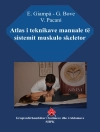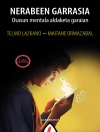“A lifesaver – not just for PA students, but for faculty and administrators trying our best to prepare them. Perfect for students to read and use on rotation.”
– James Van Rhee, MS, PA-C, DFAAPA, Program Director, Yale Physician Assistant Online Program
The first pocket-size resource to guide PA students through their behavioral health rotation
Prepare for and thrive during your clinical rotations with the quick-access pocket guide series, The Physician Assistant Student’s Guide to the Clinical Year. The Behavioral Health edition of this 7-volume series, discounted when purchased as a full set, delineates the exact duties required in this specialty.
Written by an experienced PA educator, this guide details the clinical approach to common presentations such as anxiety, depression, and substance use disorders. It also provides a systems-based approach to 40 of the most frequently encountered disorders you will see in this rotation, including bipolar disorder, schizophrenia, and personality disorders.
Distinguished by brief, bulleted content with handy tables and figures, the reference offers all pertinent psychiatric rating scales, screening tools, and diagnostic criteria needed to confirm a diagnosis. This guide also describes the urgent management techniques you will learn during the behavioral health rotation, including suicide risk assessment, management of delirium tremens, and use of restraints.
Key Features:
- Provides a pocket-size overview of the PA behavioral health rotation
- Describes common clinical presentations and mental health disorders
- Offers a step-by-step approach to diagnosis and treatment planning
- Includes clinical pearls throughout
- Reflects the 2019 NCCPA PANCE blueprint
- Includes two bonus digital chapters! Three guided case studies to reinforce clinical reasoning plus 25 rotation exam-style questions with remediating rationales
Other books in this series:
The Physician Assistant Student’s Guide to the Clinical Year:
- Family Medicine
- Internal Medicine
- Emergency Medicine
- Surgery
- OB-GYN
- Pediatrics
Spis treści
Preface
Introduction: The Approach to the Patient in Psychiatry
Share: The Physician Assistant Student’s Guide to the Clinical Year: Behavioral Health
1. Common Presentations in Psychiatry
COMMON PRESENTATIONS
2. Common Disease Entities in Psychiatry
ANXIETY DISORDERS
DISRUPTIVE, IMPULSE CONTROL, AND CONDUCT DISORDERS
DISSOCIATIVE DISORDERS
EATING DISORDERS
GENDER DYSPHORIA
MOOD DISORDERS
NEUROCOGNITIVE DISORDERS
NEURODEVELOPMENTAL DISORDERS
OBSESSIVE-COMPULSIVE AND RELATED DISORDERS
PERSONALITY DISORDERS
PSYCHOTIC DISORDERS
SOMATIC SYMPTOM AND RELATED DISORDERS
SUBSTANCE USE DISORDERS
TRAUMA AND STRESSOR-RELATED DISORDERS
3. Diagnostic Testing
DIAGNOSTIC IMAGING STUDIES
OTHER DIAGNOSTIC TESTING
PSYCHIATRIC RATING SCALES AND SCREENING TOOLS
4. Patient Education and Counseling
SELECTED PATIENT EDUCATION TOPICS PERTINENT TO PSYCHIATRY
5. Urgent Management
ACUTE DYSTONIA
AKATHISIA
DELIRIUM TREMENS
LITHIUM TOXICITY
MONOAMINE OXIDASE INHIBITOR HYPERTENSIVE CRISIS
NEUROLEPTIC MALIGNANT SYNDROME
SEROTONIN SYNDROME (SEROTONIN TOXICITY)
SUICIDE RISK ASSESSMENT
TRICYCLIC ANTIDEPRESSANT TOXICITY
USE OF RESTRAINTS
VIOLENCE OR HOMICIDE
6. Common Procedures and Psychotherapies in Psychiatry
PROCEDURES
PSYCHOTHERAPIES
7. Common Abbreviations in Psychiatry
Index
O autorze
Maureen Knechtel, MPAS, PA-C, is the academic coordinator and an assistant professor with the Milligan College Physician Assistant Program in Johnson City, TN, and practices as a cardiology PA with the Ballad Health Cardiovascular Associates Heart Institute.












